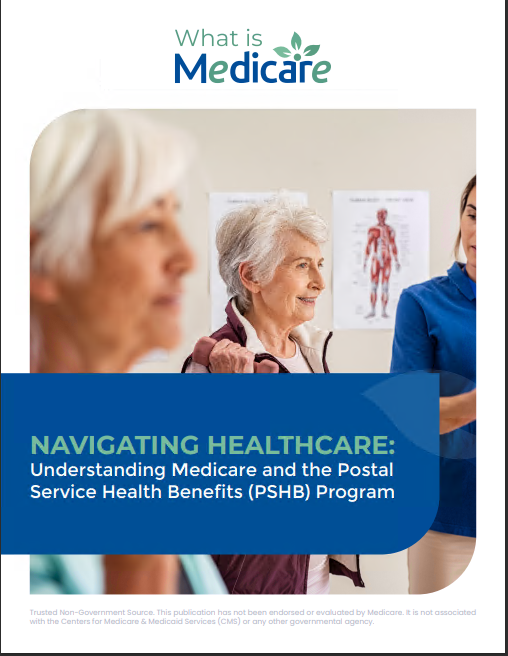Key Takeaways
-
Your Medicare plan might look good on paper, but it can fall short in critical moments unless you evaluate it based on real-life healthcare scenarios.
-
You should regularly review your plan’s coverage, network restrictions, cost-sharing structure, and coordination with other programs like Medicare Part B and Part D.
How Coverage Looks Versus How It Performs
Medicare plans are often chosen based on premiums, deductibles, or provider lists. But how those elements function when you’re facing a serious illness, surgery, or ongoing condition is what ultimately defines whether your plan works when you need it most.
What Comprehensive Coverage Really Means
Medicare plans vary in how they define and deliver “comprehensive” coverage. You may assume that your plan includes everything you need, but:
-
Some plans have narrow networks, limiting your access to specialists.
-
Others impose strict prior authorization rules for procedures.
-
Coverage may exclude certain high-cost treatments or specialty drugs.
A plan that performs well under everyday conditions may not deliver the same support in a crisis.
Hospital and Emergency Coverage Realities
In 2025, Medicare Part A covers hospital stays, but there’s a $1,676 deductible per benefit period. After 60 days, you start incurring daily coinsurance charges. Plans that supplement or coordinate with Part A differ widely in how much they reduce this financial burden.
Questions to ask yourself:
-
Does your plan reduce or eliminate your Part A deductible?
-
Are out-of-network emergency services fully covered?
-
Is air ambulance coverage included in emergencies?
If the answers aren’t clear, your plan may fall short in high-stakes scenarios.
Your Prescription Drug Needs May Not Be Fully Met
Medicare Part D helps with prescription drug coverage, but plans under it have varying formularies and rules. As of 2025, there’s a $2,000 out-of-pocket cap, which helps—but only if your drugs are covered.
Formulary and Tier Problems
Plans can change their formularies annually. That means:
-
A drug covered last year might no longer be included.
-
The same medication might be moved to a higher cost tier.
-
Step therapy may require you to try and “fail” on cheaper drugs first.
You must review the plan’s drug list during each Medicare Open Enrollment period (October 15 to December 7) to avoid unpleasant surprises.
Provider Networks Aren’t Always What They Seem
Network access is one of the most misunderstood elements of Medicare plans. It’s not just about whether your doctor is listed—it’s about how stable that relationship is.
Changes Can Happen Without Notice
A provider who is in-network today may:
-
Leave the plan’s network midyear
-
Stop accepting your plan
-
Be replaced by a higher-cost provider
This is especially common in plans with smaller regional networks. You should:
-
Confirm network participation annually
-
Ask your providers directly whether they plan to continue with the plan next year
Prior Authorizations and Treatment Delays
Many Medicare Advantage plans use prior authorization for:
-
Diagnostic tests
-
Surgeries
-
Physical therapy
-
Imaging
While designed to control costs, prior authorizations can lead to care delays. If your plan requires frequent pre-approvals, it may create hurdles at critical times.
In 2025, CMS has implemented some reforms to reduce unnecessary prior authorizations, but many still apply. You should check your plan’s documentation or contact customer service to clarify what requires prior approval.
Out-of-Pocket Maximums: Are You Protected?
In Original Medicare, there’s no out-of-pocket maximum. But if you’re enrolled in a Medicare Advantage plan, you do get some protection. The 2025 limits are:
-
$9,350 for in-network care
-
$14,000 for combined in- and out-of-network care
These figures sound like a safety net, but:
-
Not all services count toward the cap
-
Prescription drugs (under Part D) have a separate cap ($2,000)
-
Supplemental benefits like dental or vision are often excluded
You need to understand what’s included in your plan’s calculation and what’s not.
Travel and Geographic Limitations
Some Medicare plans only offer coverage within specific service areas. That can be a problem if:
-
You move states
-
You travel frequently
-
You spend long periods visiting family elsewhere
Original Medicare covers you nationwide, but some private plans restrict you to local providers except in emergencies. Always check whether your plan offers national or travel-friendly options.
Coordination With Medicare Part B
Medicare Part B covers doctor visits, outpatient procedures, and durable medical equipment. In 2025, the standard monthly premium is $185, with a deductible of $257.
Your plan’s coordination with Part B matters because:
-
Some plans waive the deductible
-
Others offer cost-sharing reductions
-
Some require higher copayments than you’d expect
If your plan isn’t reducing your expenses meaningfully compared to standard Part B, it may not offer much real-world value.
Supplemental Benefits: Overpromised and Underused
Some Medicare plans promote extras like dental, vision, hearing aids, or over-the-counter (OTC) allowances. In 2025, fewer plans offer transportation and OTC benefits than in 2024.
What You Should Know:
-
Benefits vary significantly by plan and region
-
Some are only available through certain providers
-
Many expire unused due to complexity or access issues
These benefits shouldn’t drive your plan choice unless you know you’ll use them and understand the limits.
How to Evaluate Whether Your Plan Still Works
A plan that served you well at 65 may not be right at 70. Health conditions change. Medications increase. And costs can escalate.
Perform an Annual Review
Each year between October 15 and December 7, during Medicare Open Enrollment, you should:
-
Compare your current plan to others available in your ZIP code
-
Check changes in premiums, deductibles, and cost-sharing
-
Verify your doctors and prescriptions are still covered
Ask These Key Questions:
-
What’s changed in my health this year?
-
Has my plan changed its network, drug list, or benefits?
-
What would my total out-of-pocket cost be under this plan if I had a major health issue?
Red Flags That a Plan May Not Deliver
Look out for:
-
High out-of-pocket maximums with limited coverage
-
Frequent need for prior authorizations
-
Shrinking provider networks
-
Restrictions on specialists or second opinions
If multiple red flags appear, it’s time to explore alternatives.
What to Do if Your Plan Isn’t Working
You don’t have to stay stuck. You can switch plans during:
-
Medicare Open Enrollment (October 15 – December 7)
-
Medicare Advantage Open Enrollment (January 1 – March 31)
-
Special Enrollment Periods (after life events like moving or losing coverage)
Switching plans can provide better network access, cost protection, or medication coverage. But timing matters—so act within the designated windows.
A Plan’s Value Isn’t What It Says—It’s What It Does
Marketing materials may show attractive perks, but what matters is how a plan supports you when health issues arise. If it puts up barriers, denies key treatments, or lacks access to providers, those perks lose their value.
You need more than low premiums or extra benefits—you need security and predictability when your health is at stake.
Make Sure Your Medicare Plan Can Withstand a Health Crisis
When you need care the most, your Medicare plan should function smoothly—not add complications. That means choosing a plan that offers real value across cost, access, flexibility, and support. Don’t wait until a serious diagnosis reveals the flaws.
Take time each year to assess whether your plan still serves your current and future needs. If it doesn’t, talk to a licensed agent listed on this website to get help comparing better options that do.










